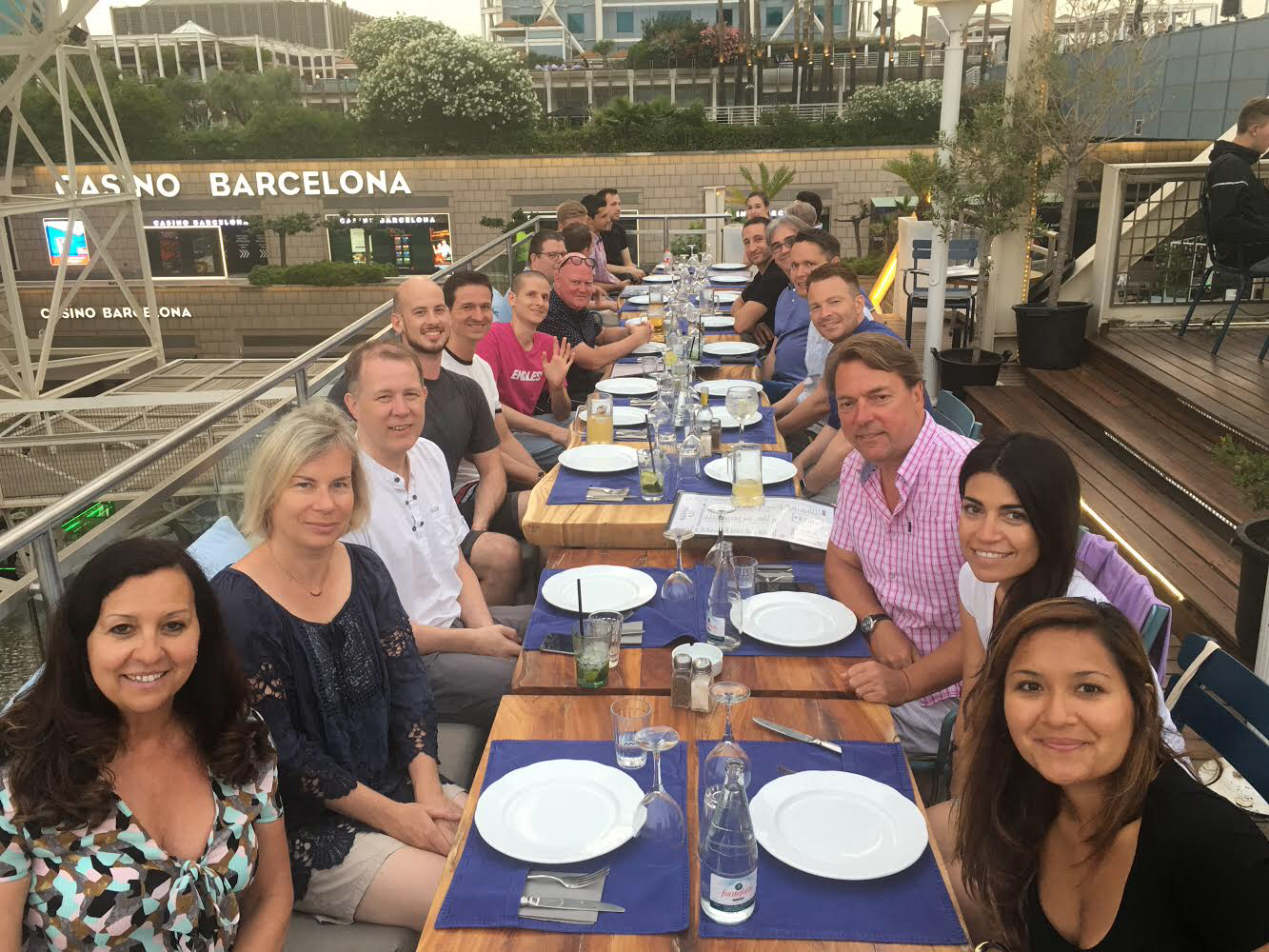Travelling to the Autodesk cloud accelerator last June in Barcelona was so exciting that we would like to share our experience so that anyone considering the trip can appreciate the value of the event. We found the trip a very worthwhile experience and anybody considering the same should just do it!
The offices are located on the 7th floor of a very modern building where users are exposed to landscape views of the very picturesque views of Barcelona's coast and Balearic sea. Temperatures reached nearly 30 degrees - Not ideal code writing considerations but the temptation of spending the day cooling in the sea was overcome by the quality of Autodesk's air con units.
The experience began with submitting a proposal as per to build an application. The event is free and all that we had to do was pay for flights, accommodation and subsistence. Once accepted, we booked right away.
Day1 kicked off with an introduction of who’s who and what each team was there to build. It was useful to see what technologies others were using and what Forge APIs each team would work with. This presented each team the opportunity to share resources on certain aspects of respective project.
Following this, the team of Forge developer advocates presented demos and projects that they built using the Forge platform. They presented us with a range of applications including some samples that used forge pre-release beta apis. Other projects included Dreamcatcher, Dasher and the VR/ AR toolkit using the Microsoft hololens and the Daqri helmet.
Adam Nagy, Forge developer advocate presenting an introduction to Forge APIs
We were there to develop a proof of concept application that used the Forge viewer to view BIM Collaboration Format(BCF) files in context of the accompanying Industry Foundation Classes(IFC) file. For more information on these formats, please see ifc-tech.org. To summarise, just as IFC is the opens standard for exchanging BIM model files, BCF is the open standard for exchanging BIM model issues.
We wanted to provide a simple and accessible way for our clients to view issues without the requirement to invest in expensive desktop software. Plus, we wanted to build something using the Forge best in class viewer.
We built our application in Node.js/ Typescript using the cycle.js front end framework enabling us to develop with functional and reactive development patterns. We also used a range of the Autodesk Forge services including Objects API, Model Derivative API and the Forge viewer API.
At the end of the accelerator, we had a fully functioning prototype to show. A user could upload an IFC and BCF file through our application to the Forge platform, then use the application to select an issue to view. The camera would update to highlight objects, providing the user a 3D view of the issues in the BCF.
Application screenshot
In summary, it was a great environment to work in for the week. Having the Forge development team available to answer any API related queries was of huge value saving us time exploring documentation. The value of developing with no distractions for five days is really underestimated for prototyping and a great way to focus on the task at hand.
We would like to thank Autodesk for their great hospitality and the new friends we made along with the good coffee which kept us going for the week. In a nutshell, the Forge accelerator is a great opportunity to work alongside the Autodesk Forge development team to develop your own custom applications. Submit a proposal detailing what you app does and how it works. It is that easy.
Ps. We are aware that many companies do not have in house development teams so if you fall into this category, please get in touch to see if our swat team of developers can help.




